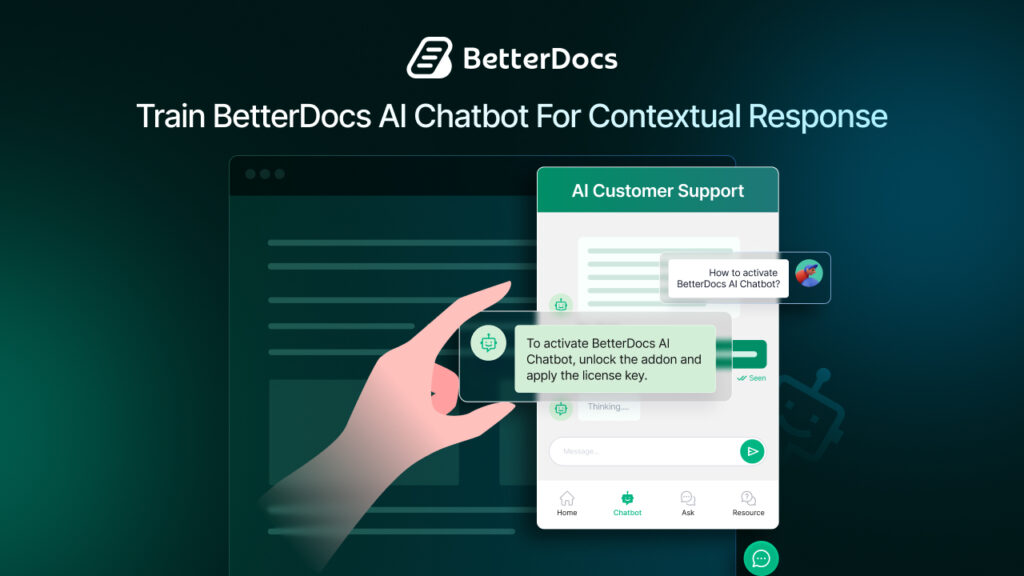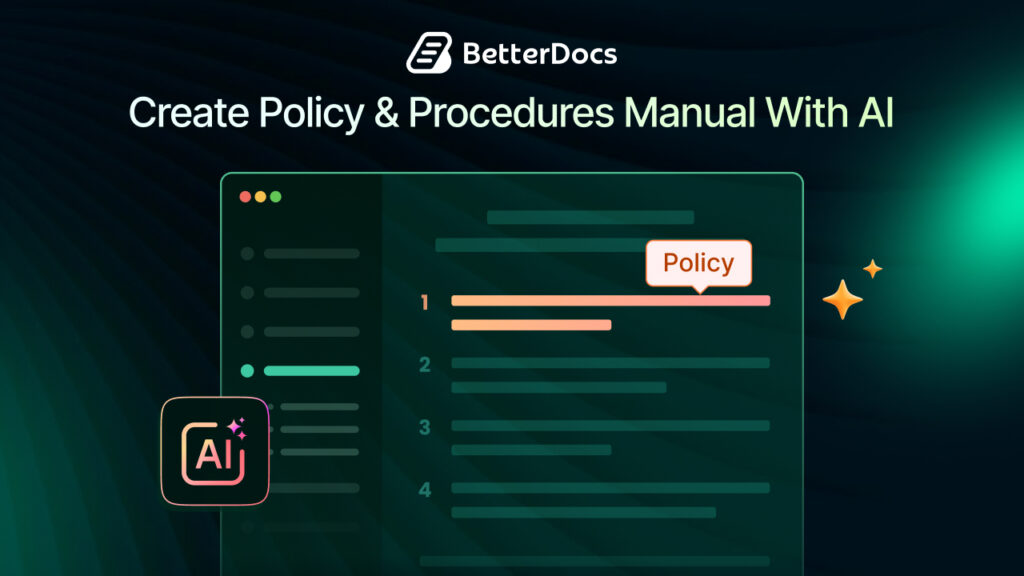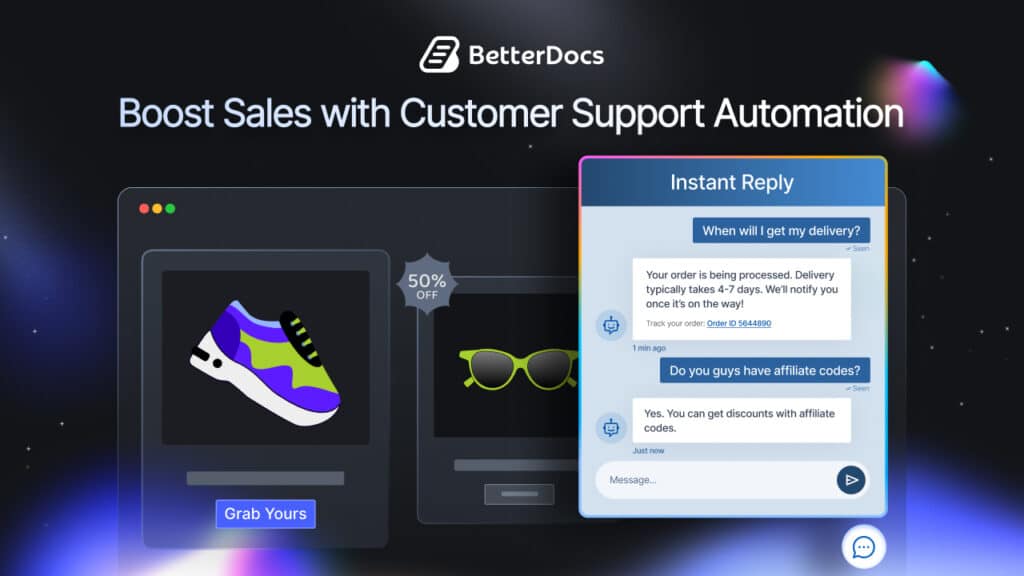Quality technical documentation is considered a crucial necessity in 2025. The obvious question is how you can ensure that your technical documentation is as effective as possible. This is a good time to mention tracking Key Performance Indicators (KPIs). KPIs give you valuable insights into how your documentation performs and what areas need improvement. This blog will walk you through the top technical documentation KPIs your company should track in 2025 to ensure your customers can get the most out of your products and services.
![Top Technical Documentation KPIs to Track for Your Company [2025] 1 Technical Documentation KPIs](https://betterdocs.co/wp-content/uploads/2024/10/image-1.jpeg)
Whether you work in SaaS, software development, or hardware product manufacturing, well-structured, easily accessible, and accurate documentation is important to deliver the best possible customer experiences.
Technical Documentation KPIs: Why Should You Track Them?
Keeping track of how well technical documents are doing – or Key Performance Indicators (KPIs) – can help a company understand and improve the help they are giving to users, especially for companies that build software or digital tools. Here is how tracking these numbers makes a big difference:
Improved User Experience
👉 Understanding User Needs: Tracking key information, like how often documents are used, which pages are visited most, and what feedback people leave, can help a company see how users are interacting with their documentation. This gives insight into which parts of the documentation are helpful or confusing. For instance, if a troubleshooting guide is getting a lot of views, it could mean there are common questions or issues with a certain feature. This information can also show what users are struggling with, or if there is a popular feature with lots of new users needing help.
👉 Reducing Friction: Most people turn to technical documentation when they are trying to solve a problem or need extra guidance. Technical documentation KPIs like how long users spend on a page or when they leave a page without finishing can show where they are getting stuck or feeling frustrated. If users get “stuck” on certain pages, it might mean the content is not clear enough. Tracking top technical documentation KPIs can guide a company to make the content simpler and avoid any confusion, making it easier for people to get what they need without getting frustrated.
Enhanced Product Adoption And Customer Retention
👉 Making It Easier to Learn the Product: When a company’s documentation is clear and easy to follow, it helps customers learn to use a product with little effort. Helpful documents mean that people can get started quickly and understand the product without asking for help. KPIs, like how many tasks users complete successfully or the number of support tickets they avoid, show how well the documentation helps people get up to speed on their own.
👉 Keeping Customers Happy and Loyal: Good documentation helps users feel confident about using a product, which often means they are more likely to keep using it over time. When users can find answers and solve problems on their own, they are more likely to stick around and keep using the product, renewing their subscriptions or services. Tracking customer retention can even show how much of an impact the documentation has on keeping customers.
Reduction in Customer Support Costs
👉 Fewer Support Requests: Good documentation can give customers the answers they need without having to ask the support team. Tracking technical documentation KPIs like “ticket deflection” (meaning questions answered by the documentation instead of support) and the “percentage of questions solved through documentation,” helps companies see how much the documentation helps save time for the support team, which can save the company money.
👉 Focusing Support on Complex Problems: When documentation handles common questions, the support team can focus on more complicated issues that need a person’s help. This lets them use their time better and respond faster to those who need extra assistance.
![Top Technical Documentation KPIs to Track for Your Company [2025] 2 Technical Documentation KPIs](https://betterdocs.co/wp-content/uploads/2024/10/image-3.png)
Data-Driven Documentation Improvements
👉 Finding Gaps in Content: Analyzing what users search for and which pages they visit most, companies can spot areas where the documentation might need improvement. For example, if users search for something but can not find a good answer, it shows a content gap that the company can work on.
👉 Targeted Content Updates: Technical documentation metrics also help companies decide which areas of the documentation to update first. Focusing on high-priority areas where users often have questions ensures the documentation keeps up with changes in the product and better meet user needs.
Boost in SEO And Organic Traffic
👉 Increased Visibility: Well-written, and SEO-optimized documentation can attract organic traffic. KPIs such as the number of external visitors, time spent on documentation, and backlink metrics indicate how well documentation performs in search engine rankings. A higher ranking not only helps current users but also attracts potential customers looking for solutions.
👉 Improved Lead Generation: Companies can increase their digital footprint by making documentation easily discoverable. Well-performing content in technical documentation can also act as a soft marketing tool, funneling users into broader product engagement and potentially leading to conversions.
Increased Team Productivity
👉 Internal Alignment: Performance indicators such as productivity of content writing, time taken by a particular reviewer in coming up with their report, and the level of collaboration exhibited by a team can be used to track the documentation creation process. These metrics help to keep teams on track, on schedule and focused on producing work of the highest possible technical quality.
👉 Reduced Redundancies: Tracking performance and time spent on certain areas can help reduce redundancies in documentation efforts, allowing teams to prioritize more critical updates or new content development, leading to increased overall productivity.
Better Stakeholder Communication
👉 Measurable ROI: Tracking technical documentation KPIs is a great way to show the value of good documentation to company leaders. It helps prove how documentation saves money by reducing support costs, makes customers happier, and encourages more people to use the product. All these benefits show the positive impact of well-maintained documentation.
👉 Informed Decision-Making: With clear data, decision-makers can make better choices about the company’s technical documentation. For example, if the data shows users need more help in certain areas, leaders might decide to hire more technical writers or invest in new tools to make the content even better for users.
Compliance And Standardization
👉 Ensuring Consistency: Tracking KPIs for documentation helps ensure that all technical materials follow the same rules and meet industry guidelines. This is important because when there are many documents, it’s easy for new information to get missed or for some documents to be outdated. KPIs help the company keep everything updated and aligned with legal and industry standards.
👉 Minimizing Risk: A company that does not meet documentation standards could face legal or financial issues. Companies can avoid these risks by regularly reviewing and checking that documents meet all legal requirements. Tracking how often documents are reviewed and how well they meet compliance standards helps the company stay safe and responsible.
Enhanced Innovation And Product Development
👉 User Feedback as Input for R&D: Indicators used to track customer feedback regarding technical content can also be useful for the product development team. Monitoring those issues or areas in which users have most frequently raised or expressed they have problems, businesses gain insights into what can be changed, enhanced, or developed in their product.
👉 Fostering a User-Centric Approach: This user-driven feedback loop ensures that both the documentation and the product evolve to meet real user needs, helping the company stay competitive and responsive to market demands.
Improved Scalability
👉 Helping New Employees Learn Quickly: In large companies, internal technical documents are very useful for training new employees. Tracking technical documentation KPIs like how easy it is to find and understand these documents shows how well new hires can learn what they need to know as the company grows. Good documentation helps new team members get started smoothly and feel prepared.
👉 Facilitating Expansion: When companies expand into new areas or markets, having clear and standardized technical documentation becomes even more important. KPIs can guide teams in translating documents accurately and ensuring that the information is consistent across languages and cultures. This helps the documentation serve people in different regions effectively.
![Top Technical Documentation KPIs to Track for Your Company [2025] 3 Technical Documentation KPIs](https://betterdocs.co/wp-content/uploads/2024/10/image-4.png)
Top Technical Documentation KPIs to Track for Your Company
Now that you know the importance of technical documentation KPIs, it is time to know the key performance indicators of technical documentation. Below are the top technical documentation KPIs that are crucial to track for your company:
1. Documentation Usage Metrics
Having data about the specific number of hits, number of distinct visitors, and average time spent on pages is the starting point of usage analysis. These metrics give you an idea of the pages that users are interacting with most, the frequency at which they are, and the duration spent on one page.
For example, if one particular page has been given a high bounce rate it may mean that users are not being able to find what they are looking for on that specific page. Analytics solutions such as Google Analytics or Hotjar will be instrumental in measuring these parameters so that you can better structure and word your documentation to enhance audience interest and access.
2. Customer Satisfaction (CSAT) Scores
CSAT scores for customers must be used where you are measuring the achievements in your technical documentation. Another approach is to ask users of your documents to complete surveys or feedback forms that can give an insight into cases your documentation is either doing well or poorly.
For example, if the users comment that the certain guide is too complicated or the information is old, then it is high time for a change. Tracking CSAT scores over time also assists in detecting progression after various measures have been implemented. When finding ways to increase customer satisfaction make it a point to cut out on complex vocabulary and generalize on the passages to give straightforward direction.
3. Searchability & Findability
It would not matter how much time you have put into technical documentation if you cannot easily find something they are searching for. Accessibility relates to the ability of the user to find content easily using search engines or an organizational search bar.
You can keep track of the type of searches done, the rate of successful searches, and the rate at which people abandon searches can help in determining how users are engaging with documents. A high abandonment rate may be a result of the fact that people are searching for certain keywords that have no relation to your content, and thus may require alteration of tag or meta information. Enhancing searchability increases user satisfaction because searching for important information is made faster.
4. Time to Information (TTI)
Time to Information (TTI) is a metric that defines the time taken by the users to find the desired information in the documentation. A long TTI is rather annoying to users while in contrast, a short TTI allows users to get to what they want in the shortest time possible.
This can mean reducing TTI by improving the organization of content; and utilizing heading/sub-headings; bullet points; and simple language. The purpose is to provide the user with an improved method for quickly searching the document for the information he or she is looking for. Proper documentation also helps to decrease the level of frustration among the users and, as a result, makes your product more friendly.
5. Content Accuracy And Updates Frequency
Ensuring that your documentation is accurate and up-to-date is crucial, especially in fast-evolving industries like tech. Monitoring the frequency of content updates helps ensure your users are always accessing the latest and most relevant information.
Measuring how often your documentation is updated and comparing it with product changes or user feedback, allows you to maintain the accuracy of your content. Regularly updating technical docs also builds trust with your customers, as they know they can rely on your resources to stay current.
6. Self-Service Success Rate
Technical documentation is one of the significant reasons to allow users to fix the issues independently. It is a KPI that estimates a portion of the problem solved by users through your documentation and materials, without contacting the support service.
To track this metric, you should look at the ratio of how many users of your documentation solved their problems on their own without the need to contact the helpdesk. A high degree of self-service success means that you and/or your documentation provide your users with a clear understanding of how to find the information that they need and how to utilize it.
7. Support Ticket Deflection Rate
A strong technical documentation system can significantly reduce the number of support tickets your company receives. Tracking the support ticket deflection rate helps you measure how often users are finding the answers they need in your documentation instead of submitting a ticket.
A higher deflection rate means fewer resources are spent on support, freeing up your team for more complex issues and reducing operational costs. This KPI is closely tied to the self-service success rate and is a key indicator of the overall effectiveness of your documentation.
Transform Your Technical Documentation with Data-Driven Insights in 2025
Maintaining the technical documentation KPIs enables you to enhance your documentation. It helps you verify whether your technical documentation satisfies your users or not. Considering several factors such as documenting usage, customer satisfaction, findability, and support ticket handling helps you improve the self-service experience, customer support costs, and user satisfaction.
To transform your documentation into a user-friendly guide for your company and your customers, you need to start measuring these technical documentation KPIs in 2025. As you refine and adapt your strategies based on data, your technical documentation will become a contributing factor to your company’s success.
Was this blog helpful for you? Do share your thoughts in our Facebook Community and subscribe to our blogs for more insightful articles like this.
![5+ Knowledge Base Challenges You Should Look Out for in 2026 [With Solutions]](https://betterdocs.co/wp-content/uploads/2025/12/1280x720-_-Blog-Banner-_-Knowledge-Base-Challenges-1-1024x576.jpg)





